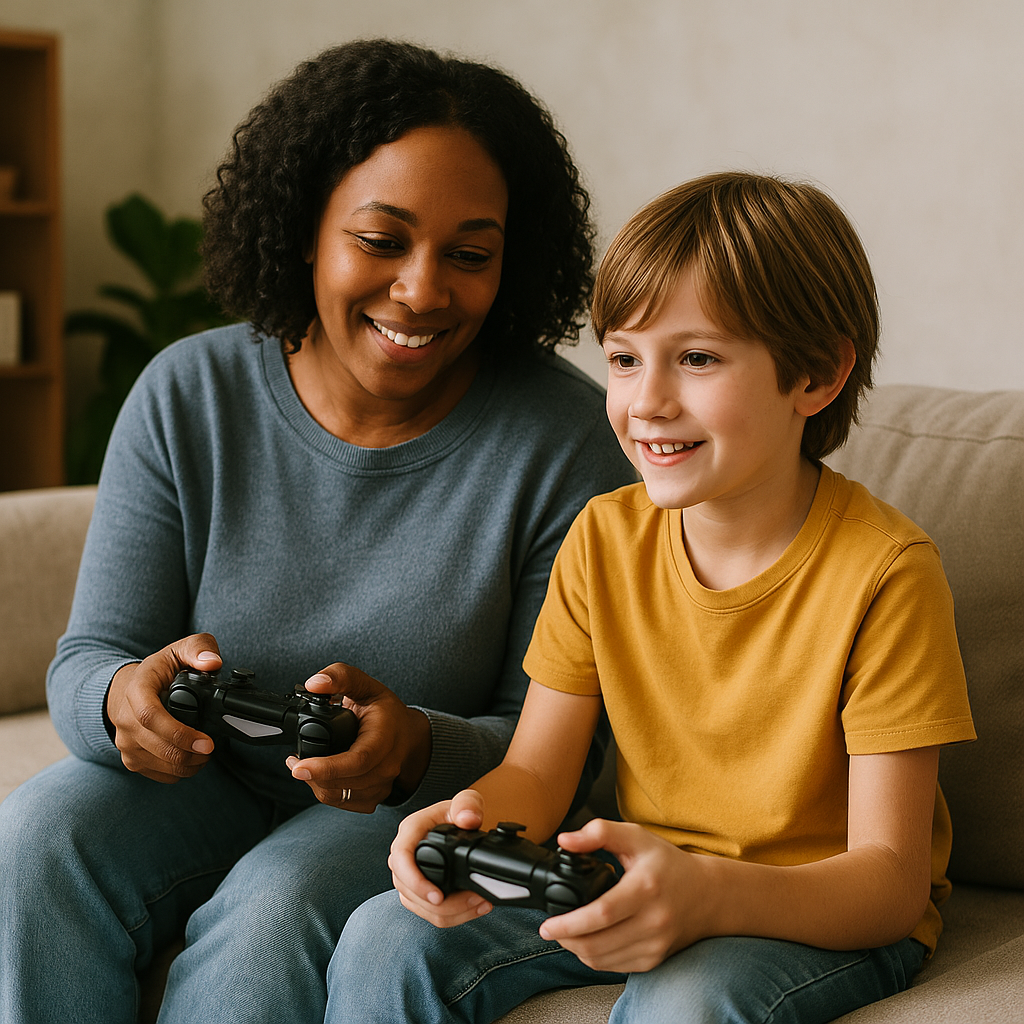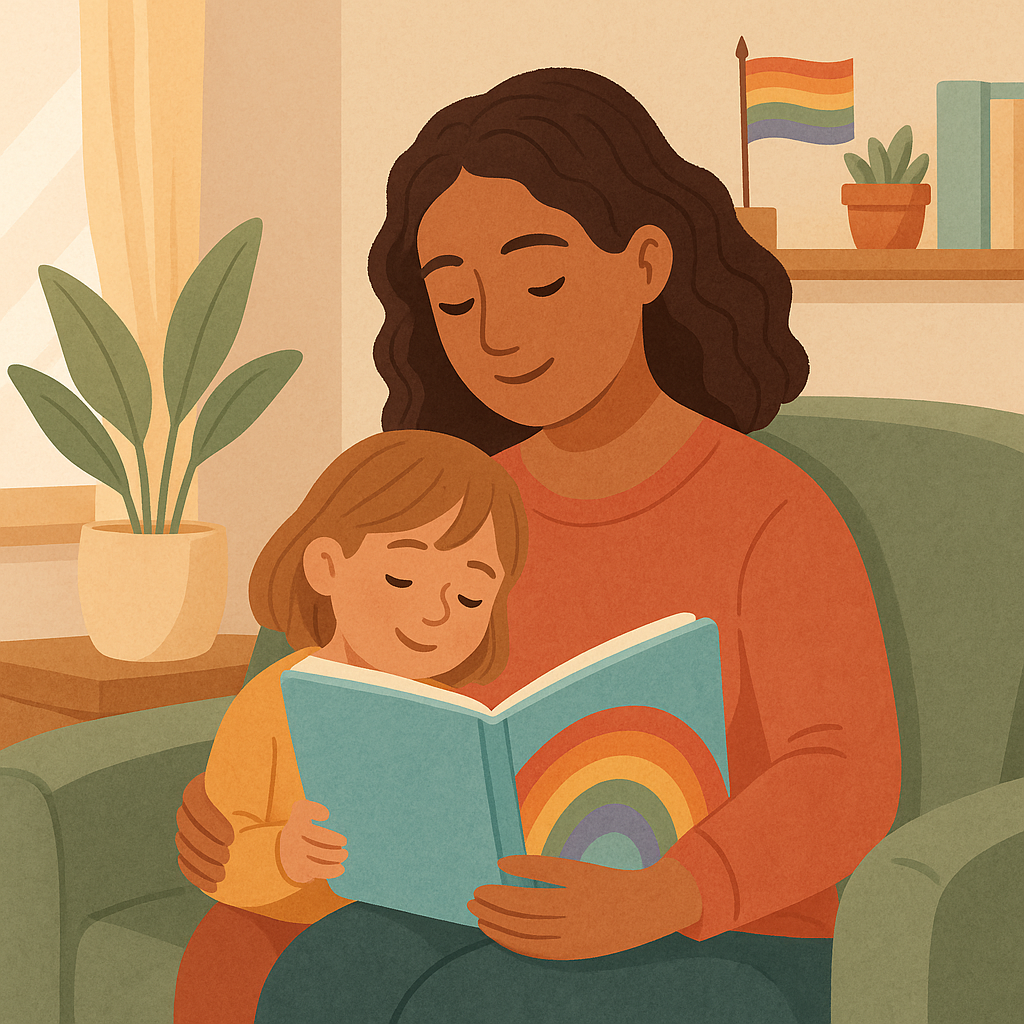By Nicole Dreiske
Here’s a 21st-century brainwave to carry your children forward – digital devices can be used to strengthen literacy and learning. Whether you’re watching a YouTube video together or guiding your child through a new app, you can use screens in the same way that you would use story time: to build neural networks and communication skills.
As director of the largest children’s film festival in the U.S., I watched thousands of movies and often talked about them at home. I had an “aha” moment when my five-year-old niece said, “Tell me another movie, Auntie ‘Cole.” The second circuit of ideas switched on when a pediatrician attending one of my festivals stated, “You’re changing brain chemistry during screen time.” I started talking with hundreds of parents, children, and teachers about best-case scenarios for kids and screens. Specifically, how could we use screen time to support our children’s learning and literacy?
That question was the “sweet spot” for teachers. They wanted children to notice “the stories in apps, games, and videos” and apply the literacy tools they were learning in school to the stories they see on screens. So I spent eight years in schools developing techniques to make that wish come true. Using Screen Smart® skills to boost literacy and learning at home starts with the three “C’s”.
- Communicate – Watching and talking go together!
- Co-View – When kids interact with others during screen time, they learn more.
- Connect the stories kids on screens to the stories they read in books
It’s easy and fun! Just apply your “story reading skills” to help kids learn from digital devices. Here are six steps to bolster academic success with screen time:
- Schedule co-viewing (or co-gaming) for 15 minutes twice a week. You’re already watching screens – just watch or play together some of the time! To start, pick a series your child loves, or a short video based on a book, like those from Weston Woods or Rabbit Ears. Many are free at your local library. Story-based apps and games will work, too. Tip: For your first co-play or co-viewing experience, choose something you know.
- Stick with your “storybook voice.” During screen talk, relax into the same tone and tempo you use when reading a story aloud to a child. That way, you can encourage and tease out kids’ responses. Just like reading stories at bedtime, you’ll both enjoy the contact and the cuddling, using a caring, playful tone to talk.
- “Prime” kids’ minds before viewing – With a few simple words, you create positive expectations for this fun, new way of engaging stories. The key is to make it sound entertaining so kids want to pay special attention. The first time, you can say: “Today we’re going to do something fun and watch for the story in the video.” Then let children know that they’ll get a chance to keep talking when the co-viewing ends. “When we finish, maybe you can “tell me the movie” the same way you would tell a story.”
- Drop knowledge bombs: Character – Plot – Setting Start using the words, “character, plot, setting” when talking with children about a game or a video. If they don’t understand, they may ask you what the words mean. Then, you have an opportunity to teach them or instruct them. Tip: Ask kids questions using those three literacy words. Instead of “Why did the bear do that?” you can ask, “Why did the character do that?” Instead of “What’s special about that castle?” ask, “What’s special about that setting?”
- Screen Talk: Extend learning by talking during screen time the way you do when reading a book to a child. When we watch or play with screens together, children naturally react, share and express themselves. In doing so, they’re activating multiple learning centers in the brain. The big bonus here: they’re learning to be critical thinkers and observers, not just consumers of content!
- Be Socratic. Ask questions and interact. Digital media are full of entertaining details that make perfect springboards for open-ended questions. You can ask questions while a program is running, or pause and question. (P&Q). Here are some questions with their literacy and learning benefits spelled out.
“What do you think is happening here?” Close analysis attention to detail in plot point.
“Where did we see that character before? What’s changed?” Recall and compare/contrast details about the character.
“Is that the same setting? Where are they now?” Recall and compare/contrast details about the setting.
“What problem do the characters have now?“ Identify the problem.
“How can they solve that problem?” Identify or suggest a solution
What do you think will happen next? Make a prediction.
Why? Support prediction with evidence
“How did the music make you feel at the beginning.” Connect to social-emotional learning.
“When did the music change?” Reference beginning, middle or end
“Why do you think it changed.” Formulate opinion based on evidence
“Do you remember when we saw a……. at the park?” Text to world connection.
Just like reading a story together it’s fun to share what we notice.
Tip: Make sure kids feel comfortable asking you questions, but turn the questions back to them whenever you can. For example, “Why do you think the character said that?” This validates their ideas and strengthens their ability to formulate opinions.
With just 30 minutes of “screen talk” each week, kids themselves will connect what they’re learning in school to screen time at home. Plus, noticing details, and talking about them helps children process what they see. Think of it this way: you can get high-yield learning from two 15-minute sessions of co-viewing. That’s a pretty big payoff for a small investment.
About the Author:
Nicole Dreiske is an educational innovator, children’s media expert and the author of THE UPSIDE OF DIGITAL DEVICES: How to Make Your Child More Screen SmartTM, Literate and Emotionally Intelligent.



